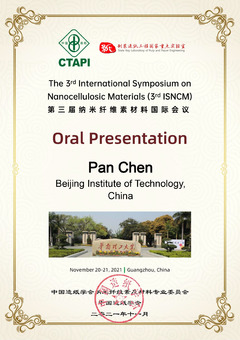Surface modification effects on nanocellulose – molecular dynamics simulations using umbrella sampling and computational alchemy
ID:100
Submission ID:100 View Protection:PRIVATE
Updated Time:2021-11-15 19:13:26
Hits:1034
Oral Presentation
Abstract
Controlled external surface modification is the common strategy to avoid the self-agglomeration among raw cellulose nanofibrils (CNF) and thus turns it into well dispersed nanocellulose, either in suspension or solid matrix. Two aspects have to be considered to understand such dispersion behavior at nanoscale, which are (a) the specific interactions between nanocellulose particles and the surrounding liquid or matrix, and (b) the interactions between particles themselves, respectively. Most of studies emphasize the former one as the mechanism of nanocellulose dispersion. By employing atomistic molecular dynamics simulation combined with computational alchemy and taking surface acetylation in water as an example, we rationalize that acetylation reduces the tendency for cellulose aggregation by decreasing the non-covalent interactions (hydrogen bonds and vdW interaction) between surface groups. This methodology is adaptive to other systems of both cellulosic and non-cellulosic surface modifications and the general conclusion still stands.
Keywords
molecular dynamics,surface morphology
Submission Author
Pan Chen
Beijing Institute of Technology



Comment submit